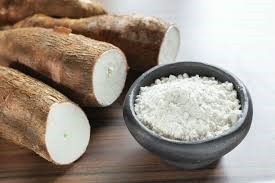Ingredient spotlight: cassava root
- Nutrition
- Dog
Cassava root is a nutritious, highly digestible, grain-free carbohydrate that helps maintain kibble integrity and texture, promoting dental health in pets. Nutritionally, cassava root is a good source of energy, and both soluble and insoluble fibre.
Soluble fibre forms a viscous solution that slows stomach emptying and increases intestinal transit time, promoting satiety and nutrient absorption. Insoluble fibre increases fecal mass and reduces intestinal transit time, contributing to the proper functioning of the gastrointestinal tract. Both fibre types have the potential to be fermented, providing nutrients for the “good” bacteria in the gut.
Cassava, Manihot esculenta, is harvested as a root or tuber, native to South America but grown throughout tropical and subtropical climates. It is a staple food in many human diets and has been used to feed many animal species. Cassava is a sustainable ingredient due to its ability to grow in various dry climates and poor soil conditions.
Our supplier completes an analysis on each shipment of product prior to shipping to ensure that it meets ALL specifications set by our nutrition and quality teams. Like all the ingredients used in our diets, cassava root is assessed and monitored by our Nutrace® practices for nutrients, toxins and contaminants, physical properties and food safety.

Did you know?
- Tapioca is the by-product of cassava root.
- Cassava root in its entirety contains the full nutrition this vegetable has to offer, and the fibres and starches needed to bind a grain-free kibble.
Take a closer look
Cassava root is a vegetable that contains plenty of carbohydrates and key vitamins and minerals.
- is an excellent source of dietary fibre and a source of vitamin C.
- has the ability to tolerate dry growing conditions.
- has low requirements for growth.
- has the potential to adapt to changing global climate.
Find this nutritious ingredient in our Wholesome Blend® Pea Free Turkey & Pumpkin and Cod & Pumpkin formulas.
Sources
Burns, A., Gleadow, R., Cliff, J., Zacarias, A & Cavagnaro, T. 2010. Cassava: The Drought, War, and Famine Crop in a Changing world. Sustainability, 2, 3572-3607. doi:10.3390/su2113572
Carciofi, A. C., Takakura, F. S., De-Oliveira, L. D., Teshima, E., Jeremias, J. T., Brunetto, M. A & Prada, F. 2007. Effects of six carbohydrate sources on dog diet digestibility and post-prandial glucose and insulin response*. Journal of Animal Physiology and Animal Nutrition, 92(3), 326-336. DOI: 10.1111/j.1439-0396.2007.00794.x.
De-Oliveira, L. D., Carciofi, A. C., Oliveira, M. C. C., Vasconcellos, R. S., Bazolli, R. S., Pereira, G. T & Prada, F. 2008. Effects of six carbohydrate sources on diet digestibility and post-prandial glucose and insulin responses in cats. Journal of Animal Science, 86(9), 2237-2246. DOI: 10.2527/jas.2007-0354
De Tafur, S. M., El-Sharkawy, M. A & Cadavid, L. F. 1997. Response of cassava (Manihot esculenta Crantz) to water stress and fertilization. Photosynthetica, 34(2), 233-239.
Montagnac, J.A., C.R. Davis & S.A Tanumihardjo. 2009. Processing Techniques to Reduce Toxicity and Antinutrients of Cassava for Use as a Staple Food. Comprehensive Reviews in Food Science and Food Safety. 8, 17-27.
Montagnac, J.A., C.R. Davis & S.A Tanumihardjo. 2009. Nutritional Value of Cassava for Use as a Staple Food and Recent Advances for Improvment. Comprehensive Reviews in Food Science and Food Safety. 8, 181-194.